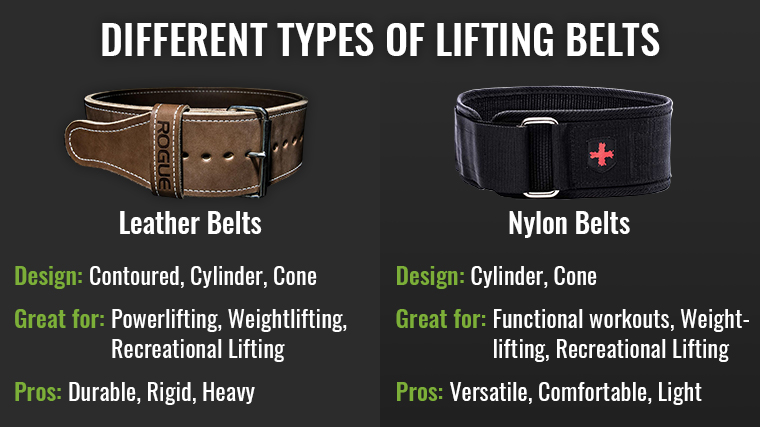Anyone who’s been to a gym has undoubtedly seen someone wearing a weightlifting belt. Some athletes scoff at the idea of wearing one and opt to lift totally raw, but there are times when wearing a belt can be beneficial. Belts give you something to brace against and are an easy way to help increase intra-abdominal pressure when lifting a heavy weight to ensure your core muscles (such as your abdominals and spinal erectors) stay tight and brace against the belt throughout the lift. There’s a good reason why people can deadlift more with a belt than without it — it helps — and is usually one of the most used items in a gym bag, alongside pre-workout and lifting straps.
There are many different types of belts and their availability, like most lifting accessories, has grown with the popularity of strength training. Consumers are often bombarded with different types of materials, latching mechanisms, and disciplines, which can leave them wondering — which is the best belt for me? Luckily, we have made a list of our top picks for best weightlifting belts in different categories, such as sport, lift specific, and budget.
Best Weightlifting Belts
- Best Weightlifting Belt: Gymreapers Quick Lock Weightlifting Belt
- Best Lever Lifting Belt: Gymreapers 10MM Lever Weightlifting Belt
- Best Lifting Belt for CrossFit: Element 26 Self Locking Weightlifting Belt
- Best Lifting Belt for Olympic Weightlifting: Rogue Oly Ohio Lifting Belt
- Best Lifting Belt for Deadlifts: Gymreapers 10MM Lever Weightlifting Belt
- Best Lifting Belt for Small Waists: 2POOD 3-inch Weightlifting Belt
- Most Comfortable Lifting Belt: Element 26 Self Locking Weightlifting Belt
- Best Colors, Designs, and Patterns: 2POOD Customizable Weightlifting Belts
- Best Lifting Belt for Squats: Gymreapers 7MM Leather Belt
- Best Lifting Belt for Support: Element 26 Hybrid Leather Weightlifting Belt
- Best Lifting Belt for Beginners: Rogue Harbinger 5″ Foam Core Belt
Best Weightlifting Belt
The main purpose of a weightlifting belt is to offer core support and stability while you are lifting. The primary function of a belt is to assist you in bracing and move with you without getting in the way. As something that assists you, it should be easy to put on and take off — no one wants to struggle to get their belt off after crushing a hard set or a new personal record, which is why we like the Gymreapers Quick Lock Weightlifting Belt so much.
Gymreapers Quick Lock Weightlifting Belt
This belt from Gymreapers does everything a lifting belt should without any of the fuss that you might get from some other belts. The belt is made of high-quality material with 100 percent nylon, and a steel roller that is built to last. The design allows you to adjust the support to exactly how much you want or need for any particular set. When you are finished with your set, simply pull the velcro strap loose and move on to your next exercise with ease.
The consistent four-inch size all around the belt provides even pressure to increase confidence in your core tightness, and the material isn’t prone to pinching the skin when doing squats or deadlifts. The color options and logo are great too with an array of colors and sizes XS to XXL to choose from.
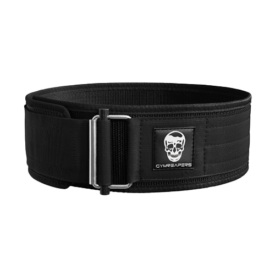
The belt is made of 100 percent nylon, and a steel roller that is built to last. The consistent four-inch size all around the belt provides even pressure to increase confidence in your core tightness, and the material isn’t prone to pinching the skin during squats or deadlifts.
Who Should Buy the Gymreapers Quick Lock Weightlifting Belt
- Lifters who want to choose the exact amount of pressure and support their belt provides will appreciate the adjustability here.
- Functional and cross-training athletes who want a belt that is easy to strap on and take off hassle-free multiple times during a workout.
- Competitive weightlifters who are looking for a belt to wear during competition due to its support and ease of use.
Who Shouldn’t Buy the Gymreapers Quick Lock Weightlifting Belt
- Lifters who are looking for a class leather option with a buckle or lever will want to look elsewhere.
- Weightlifters who are looking for a tapered design as opposed to the uniform four-inch design of this belt.
- People who want some padding on the inside of the belt for added comfort.
The Gymreapers Quick Lock Weightlifting Belt is a solid all-around choice for any weightlifter, weekend warrior, or functional fitness athlete. It has a great build, high-quality material, adjustable function, and a lifetime replacement guarantee against defects.
Read our full review of the Gymreapers Quick Lock Weightlifting Belt.
Best Lever Lifting Belt
Lever belts — the belt of choice for Strongman competitors and a large percentage of powerlifters — offer a combination of the secure locking of a buckle belt with the convenience and quickness of a lever system for fastening. The Gymreapers 10mm Lever Belt is our favorite for this category.
Gymreapers 10mm Lever Belt
Normally, leather belts are not as comfortable as other options until broken in, which can take some time — and oftentimes be painful. That’s not the case with this belt — the smoothed and stitched edges make the belt comfortable and ready to use out of the packaging. Measuring in at four inches wide with a thickness of 10mm, you can expect maximum stability and support from this belt.
It’s made from high-quality leather with an interior suede liner for moisture control, comes with Gymreapers lifetime replacement guarantee, and is USPA approved — so if you plan on competing in Powerlifting, you won’t have to change equipment. Gymreapers even has a helpful video on how to size and assemble the lever when you receive it, as well as cleaning and care instructions on their website.
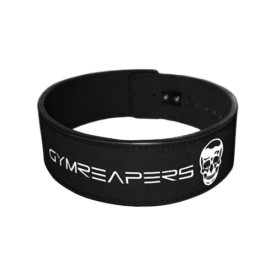
This lever lifting belt has been rigorously tested for form, fit, and function and is manufactured with premium leather. The design incorporates smooth edges, reinforced stitching, and an adjustable lever buckle attachment.
Who Should Buy the Gymreapers 10mm Lever Belt
- Lifters who want maximum support and stability that comes from having a thicker belt with a secure closing mechanism like a lever.
- Athletes who want to compete in Powerlifting and need a belt that is USPA approved.
- Anyone who likes using a thicker belt and the ability to brace as hard as you can against it
Who Shouldn’t Buy the Gymreapers 10mm Lever Belt
- Lifters who prefer buckle or velcro belts and the easier adjustments for waist size that they provide.
- Consumers who prefer not to purchase goods made from animal products since this belt is made from real leather.
- Athletes who prefer a thinner belt that offers better mobility and is not as restricting.
This belt is the real deal — it checks all the right boxes and is made from high-quality materials with a one-year replacement guarantee on both the lever and the belt.
Read our full review of the Gymreapers 10mm Lever Belt.
Best Lifting Belt for CrossFit
If you are participating in CrossFit, you know versatility is key, whether that means your ability to do well in a variety of aspects of fitness, or in this case, your lifting gear. The lifting belt that we think is best for CrossFit is the Element 26 Self Locking Weightlifting Belt. The Element 26 is the right blend of ease of use and functionality that CrossFitters demand from their equipment.
Element 26 Self Locking Weightlifting Belt
We love the versatility of this belt which can be used to provide support for anything from Olympic Lifting to CrossFit competitions. The nylon and velcro construction allows you to put on and remove the belt quickly and easily when transitioning from one exercise to another (such as hang cleans to handstand push-ups, where you want the support of the belt for hang cleans, but need it off for movement during the handstand pushups).
The high-quality 100 percent nylon and full metal easy on/off self-locking buckle make this belt a simple choice for any CrossFit athlete. It comes with a lifetime warranty and is available in eight different colors to match your aesthetic.

The Element 26 Self Locking Weightlifting Belt is made with 100% nylon and offers a lifetime warranty. The locking system allows users to find the perfect amount of pressure and easily lock the belt into place.
Who Should Buy the Element 26 Self Locking Weightlifting Belt
- CrossFit athletes who want a belt they can use in any type of workout will appreciate that this belt is easy to put on and remove quickly.
- Lifters who are looking for a high-quality choice without breaking the bank, as this belt is priced lower than many comparable ones.
- Athletes who want to choose exactly how tight or loose the belt is for each set.
Who Shouldn’t Buy the Element 26 Self Locking Weightlifting Belt
- Trainers looking for a tapered belt that doesn’t get in the way in the front, but has the ability to provide nice support on the sides and in the back.
- Athletes who prefer a leather option with a buckle or a lever rather than velcro.
- Lifters who are looking for a thicker belt to brace hard against, or one with padding inside for comfort.
If you’re looking for an easy-to-use belt that can be worn no matter the WOD, look no further than the Element 26.
Read our full review of the Element 26 Self Locking Weightlifting Belt.
Best Lifting Belt for Olympic Weightlifting
The topic of belts may start a fight in some Olympic Weightlifting circles. Some athletes prefer to wear them for both the snatch and clean-and-jerk (like Lasha Talakhadze), whereas other athletes prefer not to wear them at all, as they say, a belt can interfere with the bar movement. That is why we recommend the Rogue Oly Ohio Lifting Belt if Olympic Weightlifting is your thing. The tapered nature of the belt from four inches in the back to two inches in the front helps to minimize the possible interference it might cause in your lifts.
Rogue Oly Ohio Lifting Belt
With a 10mm thickness, this variation of the classic Rogue Ohio Lifting Belt provides great support and stability for the core, and the vegetable tanning process means the belt comes comfortably broken in and ready to use. Reinforced stitching and high-quality USA leather mean you won’t have to worry about durability with this belt.

The Rogue Oly Ohio lifting belt is made of leather and designed to be less intrusive while performing olympic weightlifting movements like the clean and jerk and the snatch. It's tapered in the front while still offering solid core support.
The tapered nature of this belt means that it won’t get in the way in the front when you are trying to keep the bar as close to your body as you can, but it still provides the support you are seeking due to the wider leather around the sides and back of the belt. Though relatively expensive compared to other options on this list, this belt is high-quality, made in the USA, and worth the money if Olympic Lifting is your goal.
Who Should Buy the Rogue Oly Ohio Lifting Belt
- Olympic lifters looking for a supportive but smaller profile belt that allows free movement due to the tapered design.
- Athletes who want a belt that allows for slightly more movement of the torso rather than being uniform all around — less width in the front allows greater torso flexibility.
- Consumers who want a durable belt with great longevity from one of the most widely recognizable names in the fitness industry.
Who Shouldn’t Buy the Rogue Oly Ohio Lifting Belt
- Lifters who prefer a belt with uniform width rather than one that is tapered to be thinner in the front.
- Trainees who want a less rigid belt or something with more flexibility.
- Buyers who want a belt that is more adjustable, such as a nylon and velcro one that can be set to any tightness.
Designed specifically for the needs of Olympic lifters, this belt is supportive and sleek, but it shouldn’t cause you to miss lifts unnecessarily. If you’re looking for some extra support during your Olympic lifting then this belt might be just what you’ve been looking for. You can pick it up for a decent price and it will likely last for years with proper care.
Best Lifting Belt for Deadlifts
Of all the lifts that can be associated with belts, the deadlift is probably the most common. There’s a reason it has been called the ‘King of all Exercises’ and whether you pull sumo or conventional, there will come a time when you’ll want to load up the plates and smash a new personal best. When that urge comes, look no further than the Gymreapers 10mm Lever Belt.
Gymreapers 10MM Lever Belt
This belt is made from high-quality leather with a four-inch width all around and a 10mm thickness to provide the right amount of support without sacrificing mobility. The comfortable smooth edges and reinforced stitching are why we recommend this belt as the go-to for your next deadlift session.

The smooth edges work to prevent pinching of the skin as you move through the range of motion of the lift you are performing. The reinforced stitching is designed to make this belt last a long time and allow you to brace as hard as you like against it without fear of damaging the belt.

This lever lifting belt has been rigorously tested for form, fit, and function and is manufactured with premium leather. The design incorporates smooth edges, reinforced stitching, and an adjustable lever buckle attachment.
Who Should Buy the Gymreapers 10mm Lever Belt
- Athletes who deadlift often and want the most comfort and stability from a belt that is thicker and has a uniform width all the way around it.
- Trainees who like a belt that is easy to use with the lever, making the belt quick to put on and take off.
- Lifters who want a thicker belt. At 10mm thick, this belt is designed to provide maximum support.
Who Shouldn’t Buy the Gymreapers 10mm Lever Belt
- Lifters who prefer the flexibility of velcro when tightening their belt to modulate the tightness from set to set.
- Buyers with a smaller budget as this belt is priced higher than some of the other belts on this list.
- Trainees who prefer nylon or other man-made material belts, or those who do not want to use animal products.
When you’re subjecting yourself to a heavy deadlift, support is at a premium, and a belt that can provide some extra support is a welcome piece of equipment. The Gymreapers 10mm Lever Belt is a high-quality piece of equipment that is designed to help improve your deadlift. This belt is ideal if you’re serious about your deadlifts, and want a belt that’s easy to secure and provides maximum support.
Best Lifting Belt for Small Waists
Finding lifting gear that fits well can be difficult. And for folks who need either smaller-than-average or larger-than-average weightlifting belts, it can be downright impossible aside from placing a custom order. If you need a weightlifting belt that can fit a small or petite waist, 2POOD has you covered.
2POOD 3-inch Weightlifting Belt
Designed with the needs of smaller lifters in mind, this belt is offered in sizes ranging from XXX-small to medium with a handy sizing chart available on the product page. The three-inch width is narrower than 2POOD’s typical four-inch width to accommodate for shorter torsos and avoid digging into the ribs. To fasten, this belt uses a “WODClamp” hook and loop system with heavy-duty velcro to keep the belt in place.
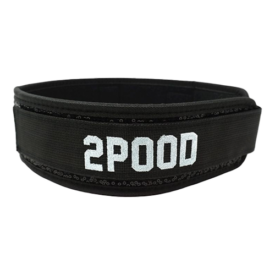
This belt from 2POOD is designed for those with a smaller frame. Sizes available are XXX-Small through Medium. The width is narrower at three inches to make the belt more comfortable for shorter torsos and help prevent digging into the ribs. Nylon material and heavy-duty velcro make this belt versatile too.
The WODClamp system is designed by 2POOD to help reduce pressure and improve the longevity of the velcro. Despite being highly supportive, this nylon belt is quite flexible and can be used for a variety of types of lifting. The flexibility allows you to easily transition between lifting heavy and other movement-based exercises. The three-inch weightlifting belt comes in seven unique designs and costs about $64.99 before tax and shipping.
Who Should Buy the 2POOD 3-inch Weightlifting Belt
- Those with a smaller frame will appreciate the narrower design that’s meant to help prevent pinching on a shorter torso.
- Trainees who prefer a versatile belt that they can use for a variety of exercises. This belt is flexible and can support both heavy lifting and more movement-based exercises.
- Lifters who like their belts to have unique designs. 2POOD has seven interesting patterns to choose from.
Who Shouldn’t Buy the 2POOD 3-inch Weightlifting Belt
- Lifters who want to most support they can get out of a belt may want to look at other, thicker options on this list.
- Buyers with a smaller budget as this belt is priced higher than some of the other similar belts on this list.
- Trainees who prefer leather belts will want to check out other options on the list.
Lifters come in all shapes and sizes — and their gear should too. Whether you have a shorter torso or smaller waist, this belt is designed to accommodate your body type. The versatile nature gives you support when you need it and flexibility otherwise.
Most Comfortable Lifting Belt
Anyone who’s ever bought a new lifting belt has likely gone through the awkward (and oftentimes painful) period of breaking the belt in. For those who’d like to skip that step and get straight to lifting with minimal pinching and discomfort, the Element 26 Self Locking Weightlifting Belt is the way to go.
Element 26 Self Locking Weightlifting Belt
We love the versatility of this belt, which can be used to provide support for anything from Olympic Lifting to CrossFit competitions. An even size of four inches all around allows for great support, while the stitched and rolled edges help to virtually eliminate pinching of the skin — making this belt both supportive and comfortable. While some people with very short torsos may find the belt width to be too wide at four inches, the majority of lifters will find this belt to be among the most comfortable they’ve worn thanks to Element 26’s design.

The nylon and velcro construction allows you to put on and remove the belt quickly and easily when transitioning from one exercise to another (such as hang cleans to handstand push-ups, where you want the support of the belt for hang cleans, but need it off for movement during the handstand pushups). The high-quality 100 percent nylon and full metal easy on/off self-locking buckle make this belt a simple choice for any CrossFit athlete. It comes with a lifetime warranty and is available in eight different colors to match your aesthetic. Pick up your favorite color for about $33 before tax with free Prime shipping.

The Element 26 Self Locking Weightlifting Belt is made with 100% nylon and offers a lifetime warranty. The locking system allows users to find the perfect amount of pressure and easily lock the belt into place.
Who Should Buy the Element 26 Self Locking Weightlifting Belt
- Those who don’t want to have to break a belt in before they use it. This belt doesn’t require any breaking in and is ready to use out of the packaging.
- Athletes who are looking for a versatile belt that goes on and comes off easily while still staying in place when on. The self-locking mechanism keeps the belt securely fastened while the velcro allows for a quick on and off transition.
- Buyers on a budget will appreciate the pocket-friendly price here.
Who Shouldn’t Buy the Element 26 Self Locking Weightlifting Belt
- Trainers looking for a tapered belt that doesn’t get in the way in the front, but has the ability to provide nice support on the sides and in the back.
- Athletes who prefer a leather option with a buckle or a lever rather than velcro.
- Lifters who are looking for a thicker belt to brace hard against, or one with padding inside for comfort.
- People with notably short torso lengths may find this belt too wide.
A belt is only helpful if you actually wear it. If your lifting belt is too uncomfortable and pinches your skin a bunch, then it essentially becomes useless because you’ll never want to wear it. With this belt, you can breathe a sigh of relief while performing heavy movements — just not during your set.
Best Colors, Designs, and Patterns
Workout gear isn’t just for supporting your lifts. You can use the design of your weightlifting belt to express yourself or show support for your favorite things. If you like to show off through your gear and want a fully custom weightlifting belt, the 2POOD customizable weightlifting belt is our favorite choice.
2POOD Customizable Weightlifting Belt
The first step in ordering your custom belt from 2POOD is deciding between the four-inch version or the three-inch wide version. The three-inch version is ideal for those with shorter torsos or those who prefer a lower profile in their lifting belt. To figure out which size to order, you can utilize the nifty and descriptive sizing guide on their website. Sizes XXX-Small through XXX-Large (and larger upon request) are available.
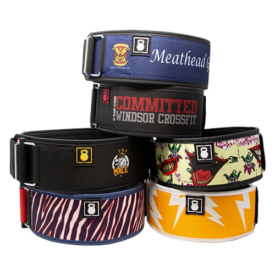
This belt from 2POOD is fully customizable from the background and embroidery to the velcro webbing and trim with different images and colors. Choose between the three-inch or four-inch width versions and sizes from XXX-Small to XXX-Large (or larger).
The customization process is actually very straightforward with 2POOD. Simply check out with the belt and size you want, and they will send you a form with customization questions where you can upload the photos and designs you’d like. You can customize the entire belt including the background, embroidery, velcro webbing, and trim with different images and colors. You’ll have one round of revisions with their designer, as well. Just remember not to submit any images that you don’t own the rights to, and allow four to six weeks for production since it is a custom item.
Who Should Buy the 2POOD Customizable Weightlifting Belt
- Anyone who likes to express themselves or rep their team will like that you can customize this belt entirely.
- CrossFitters who need a versatile belt that can support both heavy lifting and high reps.
- Weightlifters who need a belt that’s been approved by USA Weightlifting — these belts are USAW and IWF compliant.
Who Shouldn’t Buy the 2POOD Customizable Weightlifting Belt
- Athletes who prefer a buckle or lever arm for the extra security that those locking mechanisms tend to provide.
- Anyone who wants a thicker belt for more rigidity, maximum support, and the ability to brace as hard as you can during heavy lifts.
- Those who don’t care about being expressive or flashy with their lifting equipment may not find value in a custom belt.
Whether or not you want to customize this belt to represent your nickname, lifting team, gym, or anything else, it’s a great option. Aside from being fully customizable, it’s a solid weightlifting belt overall with two width options and a wide variety of sizes.
Best Lifting Belt for Squats
The squat is second only to deadlift when it comes to lifts that are associated with lifting belts. Anyone who’s ever done a heavy squat knows the importance of a high-quality belt when it comes to bracing the core and increasing intra-abdominal and thoracic pressure. Being a dynamic movement with a large range of motion does lend this lift to belts that are not quite as thick as optimal belts for deadlifts, though. That is why we chose the Gymreapers 7mm Leather Belt as our pick here.
Gymreapers 7mm Leather Belt
This belt is slightly tapered and designed for squatting — it has a four-inch width around the back tapering to three inches in the front with a 7mm leather thickness. The dual-prong buckle means that once the belt is on, it isn’t going anywhere. Premium leather and double stitching ensure this belt will last and can accommodate your toughest squat sessions — but the taper means the belt shouldn’t feel bulky or obtrusive, and won’t dig into you when squatting.
The dual-prong locking design provides a very secure feeling when you have the belt on, so the tapered design helps to not impede on mobility, allowing you to achieve a full range of motion in all your exercises. It even comes with its own carrying case, which is pretty handy.

This belt is slightly tapered — it has a four-inch width around the back tapering to three inches in the front with a 7mm leather thickness. The dual prong buckle keeps it secure, and the premium leather and double stitching ensure this belt will last.
Who Should Buy the Gymreapers 7mm Leather Belt
- Anyone looking for a high-quality belt to support them when squatting without getting in the way, or feeling obtrusive.
- Lifters who prefer a thinner or less bulky belt that will allow them to bend the ways they need to.
- Athletes who like the security of a buckle fastening system — since this comes with a double-prong buckle, the belt feels very secure.
Who Shouldn’t Buy the Gymreapers 7mm Leather Belt
- Athletes who prefer a lever or velcro fastener, and don’t like to have to crank the belt to get it tight.
- Lifters who want even pressure all around their torso, as this belt is tapered in design from four inches in the back to three inches in the front.
- Anyone who wants a thicker belt for more rigidity, and the most support they can get.
The Gymreapers 7mm Leather Belt is an excellent choice to support your squat sessions and even maxes. The comfortable construction can help prevent unwanted pinching of the skin and the one-year replacement guarantee will give you confidence that you’ve found a great product.
Read our full review of the Gymreapers 7mm Weightlifting Belt.
Best Lifting Belt for Support
When you’re lifting heavy and pushing your limits, you want all the support you can have. Donning an ultra-supportive belt can inspire the confidence you need to break through a plateau or crush a new PR. When you reach for a supportive lifting belt, grab the Element 26 Hybrid Leather Weightlifting Belt.
Element 26 Hybrid Leather Weightlifting Belt
This belt is the natural progression of lifting technology coming to life. Element 26 has taken the convenience and quickness of a nylon lifting belt and combined it with the stability and toughness of a leather belt. Essentially, this belt is a six-millimeter, four-inch, 100-percent leather lifting belt with a nylon belt attached to the outside. The enclosure mechanism is Element 26’s patented self-locking mechanism and velcro strap which locks into place and doesn’t move.
The six-millimeter thickness means the break-in period on this belt is very short — as quick as one or two sessions. The main advantage of this belt over a traditional leather belt is the double support from both leather and nylon, as well as the infinite adjustability. The velcro and self-locking mechanism allow you to adjust this belt to the exact tightness you want rather than breaking out your screwdriver like a lever belt or being stuck with pre-punched holes on a buckle design. You can purchase this belt in sizes from XS through XL, and it even comes with a lifetime warranty.

This hybrid lifting belt from Element 26 features a mix of leather and nylon for added versatility, and a self-locking buckle that makes it easy to put on and take off.
Who Should Buy the Element 26 Hybrid Leather Weightlifting Belt
- Those who are looking for the most support they can squeeze out of a belt. Despite being only six millimeters thick, this belt is still quite stable thanks to its nylon and leather build.
- Anyone whose weight fluctuates, such as weightlifters or powerlifters preparing for a meet. The velcro and self-locking design allow this belt to be adjusted to the perfect tightness every time.
- People who like the support of a leather belt but the convenience of a nylon belt. This belt offers the best of both worlds.
Who Shouldn’t Buy the Element 26 Hybrid Leather Weightlifting Belt
- Those who prefer a tapered belt, which can possibly be less in the way due to the thinner design in the front.
- Athletes who prefer not to use leather belts (such as vegans) may want to look at other options made purely from nylon or vegan leather.
- Lifters who are looking for a thicker belt to brace hard against. Many belts come in seven, nine, or even 13-millimeter thicknesses.
Element 26 continues to innovate with their products, and this is yet another example of them taking two separate yet useful products and combining them to make a superior one. With this belt, you have the support and rigidity of a leather belt with the ease of use and quickness of a nylon belt — which makes for top-notch support.
Read our full review of the Element 26 Hybrid Weightlifting Belt.
Best Lifting Belt for Beginners
For those who are just starting out in their fitness journey, the options may seem overwhelming, and we have all been there. Every mountain of a person you see repping out weights you could only dream of was once a beginner just like you. It helps to have some support when starting out, and that is why we selected a best lifting belt for beginners — the Rogue Harbinger 5” Foam Core Belt
Rogue Harbinger 5” Foam Core Belt
Slightly larger than the other belts on this list, the five-inch width and three-inch velcro strap provide a large area of coverage for your core and midsection. The belt does have somewhat of a trade-off when the weights get higher in regards to stability — the foam core is less rigid than other belts, but for beginners, that shouldn’t be much of an issue.
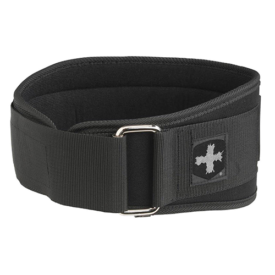
The Rogue Harbinger lifting belt is made of flexible ultra-light foam core with breathable plush tricot lining. It includes a three-inch wide support strap and a heavy-gauge steel-roller buckle for custom fit.
We also like this belt for beginners because it is made of nylon and doesn’t require any breaking, which means it is ready to use right out of the package.
Who Should Buy the Rogue Harbinger 5” Foam Core Belt
- Beginners looking for a first belt to test the waters — this belt offers standard back and abdominal support.
- Lifters who are looking for a more cost-effective option to use on lighter sets.
- Athletes who like to have more of the torso covered. At five inches around, this belt covers more of the torso than almost any other belt.
Who Shouldn’t Buy the Rogue Harbinger 5” Foam Core Belt
- Serious strength athletes who are moving heavy weight, as this belt is not designed to stand up to that type of punishment.
- Someone who wants a belt that they can have for the long haul, and use for a while. This belt may not be as durable as some other belts on this list.
- Anyone who wants a thicker belt for more rigidity and optimal support.
The five-inch width and three-inch velcro strap provide great coverage of the midsection here. There is somewhat of a trade-off with regard to stability at higher weights thanks to the foam core, but this shouldn’t be much of an issue for beginners. Finally, we like the fact that the nylon doesn’t require any breaking in, and will likely be comfortable to train in from day one.
Read our full review of the Rogue Harbinger 5” Foam Core Belt.
Weightlifting Belts Benefits and Research
Weightlifting belts have been studied quite extensively over the years as they have been a feature of weightlifting for a long time. There have been investigations into many of the theorized benefits of wearing a belt during training with mixed results.
Injury Risk and Intra-Abdominal Pressure
The first thing to note is that the use of belts seems to be only marginally effective at reducing injuries, but we must take into account that this research was conducted on people at work, not training in the gym. (1)(2) Participants in the study were wearing a belt for their entire day of work. Something that none of you reading this are likely to do.
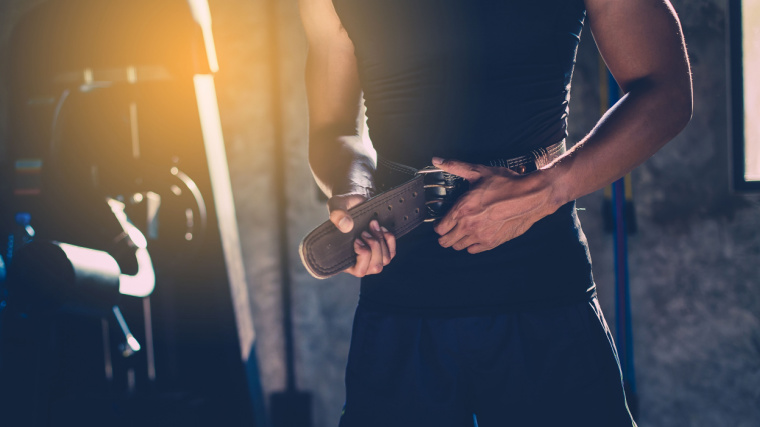
Where we can be more certain is that in a training environment, there do seem to be some real benefits. Performance of exercises, such as the squat and deadlift, while wearing the weightlifting belt resulted in greater peak and average intra-abdominal pressure and other studies found that lifting belt use resulted in reduced spinal compression. (3)(4)(5) But while some research notes the benefit of weightlifting belts, others have suggested that the use of a belt does seem to reduce the range of motion available during movements. (6)
Research Takeaways
Much of this research has been done on working populations and revolves around trying to find ways to reduce injuries. In this area at least, belts seem to lack effectiveness. However, within the gym, there are reasons for cautious optimism. Increased intra-abdominal pressure when lifting and reduced spinal compression are two things we think many would highlight as unambiguous benefits. At the same time, reducing your range of motion in the gym isn’t necessarily a good thing, so you have to be careful when selecting a belt for the task at hand.
Our advice
Don’t view the belt as a cure-all. It doesn’t excuse you from doing core work, it doesn’t excuse you from lifting with good technique and it certainly doesn’t mean you can’t get injured. Learn to use your belt properly — it can help or hinder.
Check out our in-depth Guide to Wearing Weightlifting Belts.
How We Chose the Best Weightlifting Belts
We test belts on a variety of criteria and each category receives special attention to decide which belt deserves the top pick. We chose belts based on an array of factors, but ultimately looked at their stability or support provided, how mobile you can remain with the belts on, and their level of comfort. This is one of the few lists where the price wasn’t weighed super heavily because belts all generally fall within a narrow price range based on the type of belt, and we think it’s worth spending a little extra on a piece of safety and support equipment like a belt.
Stability
The primary purpose of a belt is to help provide added stability to your core and mid-section when lifting. That’s why the amount of support and stability a belt provides is the highest priority on our list of how we chose the best weightlifting belts. We looked at how much each belt contributed to stability with regard to each type of belt (lever, quick-lock, velcro, etc), and belts that excelled in their category were ranked higher than other, less supportive belts.
Mobility
The flip side of stability and support is also something that needs to be taken into consideration. What good is an ultra-supportive belt if you can’t move in it to lift? The highest-ranking belts on our list pair a high level of support with an unrestrictive design that still allows you to move naturally through the range of motion of a lift. Belts that impede movement or worse, pinch and cause pain, weren’t ranked well if they made the list at all.
Comfort
This point is a combination of the previous two. A belt isn’t always worn for heavy singles — you may want to wear it for higher-rep sets so you have extra support when you become fatigued deep into the set. The best belts are comfortable to wear despite their support and should inspire confidence without being distracting or painful. Some belts do require a breaking-in period, which is understandable, but lower-quality belts oftentimes never break-in, and those types of belts aren’t included on our list.
[Related: Does The Ketogenic Diet Work For Strength Training?]
How Much Do Weightlifting Belts Cost?
Weightlifting belts can come in a range of prices, but usually, the type of belt will dictate the price, and most similar style belts will fall within a somewhat narrow range around that price point. Generally, belts will cost anywhere from around $30 for a really cost-effective option to around $200 for a high-end specialty belt or a custom-designed one.
| Best Weightlifting Belt | Gymreapers Quick Lock Weightlifting Belt | $34.97 |
| Best Lever Weightlifting Belt | Gymreapers 10MM Lever Weightlifting Belt | $120 |
| Best Lifting Belt for CrossFit | Element 26 Self Locking Weightlifting Belt | $34.97 |
| Best Lifting Belt for Olympic Weightlifting | Rogue Oly Ohio Lifting Belt | $135 ($145 for XL) |
| Best Lifting Belt for Deadlifts | Gymreapers 10MM Lever Weightlifting Belt | $120 |
| Best Lifting Belt forr Small Waists | 2POOD 3-inch Weightlifting Belt | $64.99 |
| Most Comfortable Lifting Belt | Element 26 Self Locking Weightlifting Belt | $34.97 |
| Best Colors, Designs, and Patterns | 2POOD Customizable Weightlifting Belts | $129.99 |
| Best Lifting Belt for Squats | Gymreapers 7MM Hybrid Belt | $49.99 |
| Best Lifting Belt for Support | Element 26 Hybrid Leather Weightlifting Belt | $59.97 |
| Best Lifting Belt for Beginners | Rogue Harbinger 5” Foam Core Belt | $27.99 |
If you’re on a budget and still need a supportive belt, you can pick up a solid one for between $50 and $70, but if you’re looking for specialized powerlifting or Olympic lifting belts, you’ll likely have to pony up a bit more coin — some options can run up to nearly triple that cost. Narrow down what type of lifting you prefer to do and what you’re looking to achieve with your belt as far as support goes, and you should have a rather well-established price range.
What to Consider Before Buying Weightlifting Belts
There has been some innovation in weightlifting belts in recent years, but essentially, belts still serve a straightforward purpose — support the core under heavy weights. Here are the main factors to think about when choosing your belt.
Your Training and Sport
The type of lifting you do is going to have a big impact on the belts you will want to consider. Powerlifters and strongmen are going to want belts that prioritize security above all else. The last thing you want is your belt coming loose in the middle of a heavy deadlift. For everyone else, ease of adjustment, comfort, and other factors will come into play more.
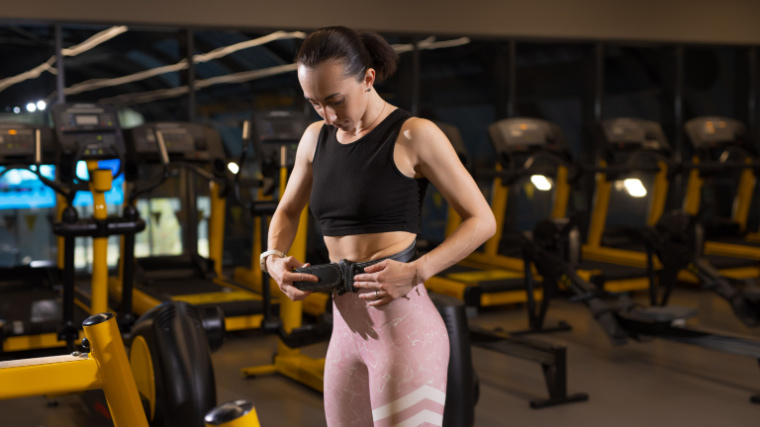
In CrossFit, Olympic Weightlifting, or bodybuilding you’re unlikely to be hitting quite such high numbers and are more likely to have to transition between a variety of exercises. Here, you’re less likely to want to spend a few minutes tightening and then unfastening your belt after each attempt. The mechanisms and materials are going to be other things you’ll want to pay attention to as well.
Your Budget
There is a big price range in this market. There is also a good reason for this price range. Some of these belts are handmade with very high-quality materials, and some are designed to be more mass market. At the upper end, you can be spending nearly $150 or more if you get into customization, but if you take care of it, it should last you a lifetime. On the lower end, you can get down to $20, but we wouldn’t expect the same lifespan or security out of those.
Design
The design of a lifting belt usually isn’t going to be a deal-breaker. Belts tend to be functional rather than aesthetic choices, but at the same time, you may have a preference for a more or less traditional design.
Different Types of Weightlifting Belts
There are multiple types of belt designs, but from our tests and reviews, every belt tends to technically fall into three major categories: cylinder, tapered, and cone.
Each belt has different design attributes to benefit certain types of strength athletes.
Cylinder Lifting Belt
This style belt is the same width at every part and covers the torso equally. They are designed to support the back, abdomen, and sides evenly with the same amount of material. Powerlifters and strongman athletes typically sway towards these belts.
Tapered Weightlifting Belt
This belt is often favored by Olympic lifters and recreational athletes because it provides the posterior with extra width but thins out towards the abdomen. The skinnier portion over the abdomen allows the torso to remain mobile while providing support without being too obtrusive.
Cone Belt
This design is the most rarely seen. These belts are contoured on the sides but offer a thicker posterior and anterior section. In theory, their design is supposed to follow the natural curvature of the torso. The Schiek Model 2004 Lifting Belt utilizes this type of belt design to create a versatile, yet supportive belt.
Fastening Mechanisms
Different belts have different locking mechanisms and each has its strengths and weaknesses. When deciding which is best for an athlete, there are some factors that will be decided by training, but mostly it comes down to personal preference. Below are the main types of fastening mechanisms and the main advantages and disadvantages associated with them.
Buckle
The classic mechanism provides a very secure fit once locked, and is easy to adjust. However, it can be difficult to get the buckle locked when you need the belt very tight, and many lifters have needed assistance to close their buckle before a big lift. You are also usually stuck with one-inch increments with the adjustments.
Lever
A lever gives just as secure a fit as a buckle, but is more customizable to the user. The downside is that it generally restricts the belt to use by just one person, as changing the fit takes time.
Velcro
Easy to adjust and to take on and off, this type of mechanism is great for sports like CrossFit, but is usually a little less secure than a buckle or lever belt. The lifespan may also be shorter unless the velcro is replaced once it wears down.
Ratchet
Less common, this type of mechanism is great for a super tight fit, but the quality of the ratchet component will be key. If it is cheaper, then usually it will be a weak point.
What Materials Are Weightlifting Belts Made Of?
Generally, weightlifting belts are made from two primary materials: leather or a man-made material, like nylon. Leather is hard-wearing and will give you a belt that will mold to your body over time, but it will usually require a breaking-in period. These belts will also require a little TLC like any leather product. You’ll want to clean them and apply leather conditioner every three to six months to avoid them drying and cracking.

Nylon belts won’t require the same breaking-in period, but also won’t end up fitting you quite the same as a well-used leather belt. They are, on the other hand, a little easier to care for and just need the occasional brushing to remove chalk, and a hand wash every now and then, depending on how sweaty you get when training.
Why Lifting Belts?
A belt is a useful piece of equipment to keep in your supportive strength arsenal. Belts are primarily used to prevent injury and support the torso during heavier movements by supporting proprioception and the creation of intra-abdominal pressure. The use of a belt can provide a strength athlete with extra support around the torso to increase a lift’s safety.
Every strength athlete can benefit from choosing a belt that’s catered specifically to their sport. Powerlifters and strongman athletes often want a cylinder-styled belt, which is a weightlifting belt that wraps around the torso equally. This type of athlete will typically want a stiffer, or more rigid belt for strength movements, as they’re often pressing, squatting, and deadlifting.
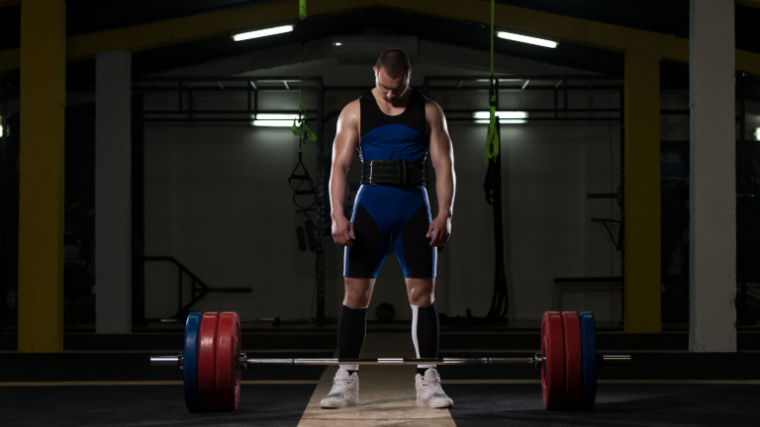
An Olympic lifter needs a weightlifting belt that provides support, but also versatility. The typical Olympic weightlifting belt usually comes tapered, so the posterior is thicker in width than the front of the belt. The stiffness and material of this athlete’s weightlifting belt usually come down to personal preference, as this athlete is performing power movements often.
The recreational and functional fitness athlete will often want a weightlifting belt that provides support, comfort, and versatility. Since these athletes perform multiple movements during a single workout, then they need a belt that holds up well with power and strength exercises.
Final Word
There are coaches out there who decry ever using lifting belts, but tools used for the right job can be effective. Lifting belts are a tool just like weightlifting shoes, foam rollers, or supplements. Stating that you should never use belts is akin to a carpenter saying he would never use a flathead screwdriver. They have their place, but you have to make sure you know why you’re using them, and practice using them beforehand. On the other end of the spectrum, you shouldn’t be wearing a belt for every single exercise in your training plan.
Belts can be an excellent option for competitions, or if you are looking to push yourself in a hard training session. Make sure you do your research before buying, train to be familiar with the belt before the day of reckoning, and use it as a tool rather than a crutch.
FAQs
What is the best weightlifting belt?
If you’re a powerlifter moving very heavy weight, a thicker, supportive belt will be best. Olympic weightlifters will want a belt that is less intrusive, and CrossFitters will want a belt that works well for functional fitness and is easy to strap on or remove. Right now, we’re fans of the Gymreapers Quick Lock Weightlifting Belt. It’s affordable, supportive, and goes on and comes off quickly.
Do you need a weightlifting belt?
If you’re a recreational lifter, then you don’t need a lifting belt for success, however, that doesn’t mean it can’t be useful. For example, if you plan to push your limits and train heavy consistently, then a belt can be a useful tool based on your goals and needs to ensure your torso is receiving enough support.
How much do weightlifting belts cost?
Weightlifting belts range in price from around $30 for a cost-effective model to around $150 — unless you start looking at custom and specialty options. If you’re shopping on a budget or simply don’t need a super heavy-duty belt, you can score a high-quality belt for around $50.
Should beginners use a lifting belt?
It depends. If you’re a true beginner, then you should conquer form and mechanics first before reaching for a belt. At times, lifters can reach for a belt a bit too soon in their career before they nail their mechanics. On the flip side there are occasions when a beginner might need a belt. For example, if you’re a beginner strength athlete and you’re working with a coach and they advise you to grab a belt, then doing so can help with the specificity of your sport.
When should you wear a lifting belt?
A lifting belt can be worn during maximal lifts, heavy sets, and strength sport specific movements. While it’s certainly not a must in these occasions, these are the times when athletes will reach for a belt to support performance with the creation of additional intra-abdominal pressure.
References
- Kraus JF, Schaffer KB, Rice T, Maroosis J, Harper J. A field trial of back belts to reduce the incidence of acute low back injuries in New York City home attendants. Int J Occup Environ Health. 2002 Apr-Jun;8(2):97-104. doi: 10.1179/107735202800339073. PMID: 12019686.
- Mitchell LV, Lawler FH, Bowen D, Mote W, Asundi P, Purswell J. Effectiveness and cost-effectiveness of employer-issued back belts in areas of high risk for back injury. J Occup Med. 1994 Jan;36(1):90-4. PMID: 8138856.
- Lander JE, Hundley JR, Simonton RL. The effectiveness of weight-belts during multiple repetitions of the squat exercise. Med Sci Sports Exerc. 1992 May;24(5):603-9. PMID: 1533266.
- Harman EA, Rosenstein RM, Frykman PN, Nigro GA. Effects of a belt on intra-abdominal pressure during weight lifting. Med Sci Sports Exerc. 1989 Apr;21(2):186-90. PMID: 2709981.
- Bourne ND, Reilly T. Effect of a weightlifting belt on spinal shrinkage. Br J Sports Med. 1991 Dec;25(4):209-12. doi: 10.1136/bjsm.25.4.209. PMID: 1810615; PMCID: PMC1479027.
- Giorcelli RJ, Hughes RE, Wassell JT, Hsiao H. The effect of wearing a back belt on spine kinematics during asymmetric lifting of large and small boxes. Spine (Phila Pa 1976). 2001 Aug 15;26(16):1794-8. doi: 10.1097/00007632-200108150-00015. PMID: 11493853.
